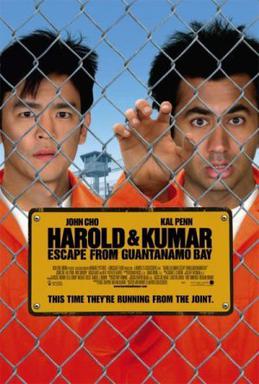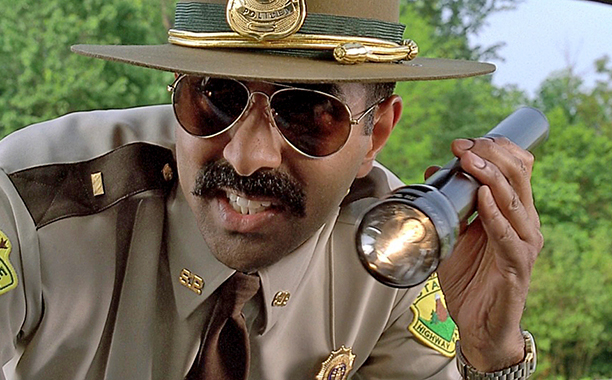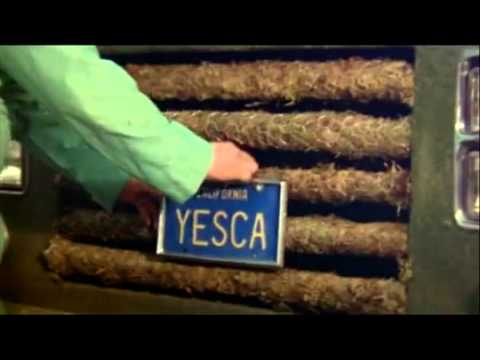Introduction
Stoner cinema, a genre that celebrates cannabis culture and its unique subversive humor, has a rich and evolving history in the world of film. It began with the iconic duo Cheech and Chong in the 1970s and has since seen a resurgence with a new wave of cannabis-themed movies. In this article, we’ll take a journey through the highs and lows of stoner cinema, exploring its evolution and the fresh perspectives brought by contemporary filmmakers.
Stoner cinema, a genre that revels in the idiosyncrasies of cannabis culture and its irreverent sense of humor, stands as a unique and enduring facet of the film world. Its history is a captivating odyssey, one that began with the iconic duo of Cheech and Chong in the 1970s, and continues to evolve, experiencing a renaissance thanks to a new generation of filmmakers who bring fresh perspectives and innovative storytelling to the genre.
In the hazy days of the 1970s, Cheech Marin and Tommy Chong burst onto the scene with a series of cult classic stoner comedies that became emblematic of the era. Films like “Up in Smoke” and “Cheech and Chong’s Next Movie” were an irreverent celebration of cannabis culture, portraying the misadventures of lovable, perpetually stoned characters who navigated a world filled with comedic mishaps and zany encounters. These films struck a chord with audiences, becoming more than just movies; they were cultural touchstones that tapped into the counterculture spirit of the times.
As the decades rolled on, stoner cinema experienced a lull, but it never faded entirely. It resurfaced in the late ’90s and early 2000s with films like “Half Baked” and “The Big Lebowski,” which introduced a new generation to the genre’s unique blend of humor and laid-back philosophy. These movies, like their predecessors, resonated with viewers who appreciated the genre’s ability to not take itself too seriously while still delivering moments of genuine insight and hilarity.
Now, in the 21st century, stoner cinema is experiencing a vibrant revival. Contemporary filmmakers are infusing the genre with fresh perspectives, taking it in exciting and unexpected directions. Movies like “Pineapple Express,” “This Is the End,” and “The End of the Tour” explore the nuanced relationship between cannabis and modern life, offering a mix of comedy, drama, and social commentary.
In this article, we embark on a journey through the highs and lows of stoner cinema, tracing its evolution from its Cheech and Chong origins to its contemporary resurgence. We’ll delve into the genre’s ability to reflect societal attitudes towards cannabis, its role in pushing the boundaries of comedy, and the ways in which it continues to provide a unique lens through which to view the ever-evolving relationship between people and the plant. As stoner cinema continues to evolve and adapt to the changing landscape of cannabis culture, it remains a testament to the enduring appeal of humor, rebellion, and the pursuit of a good laugh, all while exploring the highs and lows of life through a smoky, yet surprisingly insightful, lens.
Additionally, you can find further information on this topic by visiting this page: Evolution of the Stoner Bromance. From Cheech & Chong to Seth …
The roots of stoner cinema can be traced back to the irreverent and hilariously subversive comedy of Cheech Marin and Tommy Chong. Their iconic partnership produced a series of cult classics, including “Up in Smoke” (1978) and “Cheech & Chong’s Next Movie” (1980). These films reveled in the counterculture of the 1970s, capturing the spirit of the time with their slapstick humor, memorable characters, and a generous helping of cannabis.
The roots of stoner cinema can be traced back to the irreverent and hilariously subversive comedy of Cheech Marin and Tommy Chong, a dynamic duo whose impact on the genre remains legendary. Their iconic partnership produced a series of cult classics that not only entertained but also defined an era.
Movies like “Up in Smoke” (1978) and “Cheech & Chong’s Next Movie” (1980) are the quintessential stoner comedies, etching themselves into the annals of cinematic history. These films were more than just entertainment; they were a cultural phenomenon. They reveled in the counterculture of the 1970s, capturing the zeitgeist of the time with their slapstick humor,
You can also read more about this here: A Definitive Guide to Stoner Comedies

Throughout the 1980s and 1990s, stoner cinema saw a surge in popularity. Films like “Fast Times at Ridgemont High” (1982) and “Dazed and Confused” (1993) celebrated the carefree spirit and rebelliousness of youth, often with cannabis as a central element. These films resonated with audiences, becoming cult classics that continue to be cherished for their nostalgia and relatability.
Throughout the vibrant decades of the 1980s and 1990s, stoner cinema experienced a remarkable surge in popularity. A new wave of films emerged that celebrated the carefree spirit and rebelliousness of youth, often featuring cannabis as a central element in their storytelling. These cinematic creations, characterized by their irreverent humor, memorable characters, and iconic soundtracks, struck a chord with audiences and left an indelible mark on the cultural landscape. Today, they remain cherished as cult classics, continuing to captivate viewers with their unique blend of nostalgia and relatability.
“Fast Times at Ridgemont High” (1982), directed by Amy Heckerling and based on Cameron Crowe’s book, was a pioneering example of this genre. Set in a California high school, the film depicted the lives of a group of teenagers as they navigated the tumultuous waters of adolescence. Cannabis was prominently featured throughout the movie, reflecting the casual drug culture of the time. The film’s authentic portrayal of the ups and downs of teenage life, combined with its humor and iconic scenes, resonated with young audiences and earned it a place in the pantheon of stoner cinema classics.
“Dazed and Confused” (1993), directed by Richard Linklater, offered another unforgettable glimpse into the world of youth culture and cannabis use. Set in 1976 on the last day of high school, the film followed a group of Texas teenagers as they cruised, partied, and pondered their uncertain futures. Cannabis played a central role in the characters’ experiences, serving as a bonding agent that brought them together in moments of camaraderie and introspection. The film’s authentic soundtrack and its exploration of the transition from adolescence to adulthood struck a chord with audiences, turning it into an enduring classic of stoner cinema.
These films, along with others of their kind, tapped into the zeitgeist of their respective eras, capturing the essence of youthful rebellion, self-discovery, and the pursuit of a good time. They celebrated the freedom of youth, the allure of counterculture, and the enduring appeal of cannabis as a symbol of nonconformity. As a result, they continue to hold a special place in the hearts of viewers, offering a nostalgic journey back to a time when life was less complicated, and the pursuit of pleasure and friendship was paramount.
In the present day, these stoner cinema classics remain not only a source of entertainment but also a cultural touchstone that bridges generations. They serve as a reminder of the enduring power of film to capture the essence of an era and to evoke emotions that transcend time. Whether revisiting these films for their humor, their memorable characters, or their portrayal of cannabis culture, audiences continue to find a sense of connection and familiarity in the stories they tell, making them enduring favorites in the world of cinema.
To expand your knowledge on this subject, make sure to read on at this location: Things Are Tough All Over (1982) – News – IMDb

While the Cheech and Chong era defined stoner cinema, the genre has evolved with changing attitudes towards cannabis and a more diverse array of voices in filmmaking. The new wave of cannabis films explores the plant’s place in contemporary culture and its impact on individuals’ lives.
The Cheech and Chong era undoubtedly left an indelible mark on stoner cinema, shaping perceptions of cannabis in film for years. However, as attitudes toward cannabis have evolved and the world of filmmaking has diversified, the genre has undergone a profound transformation. The new wave of cannabis films goes beyond the slapstick humor of the past to explore the plant’s multifaceted place in contemporary culture and its profound impact on individuals’ lives.
A Shift in Perspective: The Cheech and Chong films of the past often portrayed cannabis use as a source of comic relief, relying heavily on exaggerated stereotypes and stoner clichés. While these films had their place and garnered a cult following, they did little to delve into the nuances of cannabis consumption or its broader cultural implications.
Exploring Complexity: Contemporary cannabis films are marked by a willingness to explore the complexity of cannabis use. They acknowledge that cannabis is not merely a source of laughter but a substance that can have diverse effects on individuals. These films delve into the spectrum of experiences, from relaxation and creativity to introspection and self-discovery.
Diverse Voices: The evolution of cannabis cinema has been paralleled by a more diverse array of voices in filmmaking. Filmmakers from various backgrounds are now contributing to the genre, bringing their unique perspectives and experiences with cannabis to the forefront. This diversity has resulted in richer, more authentic narratives that resonate with a broader audience.
Cultural Relevance: The new wave of cannabis films seeks to reflect the cultural relevance of cannabis in the 21st century. These movies explore how cannabis intersects with issues such as legalization, social equity, and changing societal attitudes. They provide a lens through which viewers can examine the role of cannabis in today’s world.
Personal Stories: Many contemporary cannabis films are driven by personal stories. They delve into the lives of characters who use cannabis for various reasons, whether it’s for medical relief, creative inspiration, or as a means of coping with life’s challenges. These narratives offer a humanizing portrayal of cannabis users and their motivations.
Challenging Stereotypes: A key element of the new wave of cannabis cinema is its commitment to challenging stereotypes. Instead of relying on tired clichés, these films aim to subvert expectations and present a more authentic and nuanced depiction of cannabis users and their experiences.
In conclusion, while the Cheech and Chong era remains iconic in the history of stoner cinema, it is clear that the genre has evolved with the times. Contemporary cannabis films strive to be more than mere comedies; they aim to explore the multifaceted nature of cannabis use, celebrate diversity, and engage with the pressing cultural and societal questions surrounding this remarkable plant. As the cannabis landscape continues to change, so too does the cinematic exploration of its place in our lives.
If you’d like to dive deeper into this subject, there’s more to discover on this page: Using marijuana may damage your cognitive ability, study says | CNN

Directed by David Gordon Green, this film stars Seth Rogen and James Franco in a hilarious, action-packed adventure involving a rare strain of cannabis. It combines the stoner comedy tradition with elements of the buddy film and action genre.
In the capable hands of director David Gordon Green, this film presents a comedic masterpiece, with Seth Rogen and James Franco at the helm of a riotous, action-packed adventure that revolves around a highly sought-after and exceptionally rare strain of cannabis. This cinematic gem ingeniously merges the time-honored tradition of stoner comedy with the exhilarating dynamics of the buddy film and action genre, delivering an unforgettable and genre-defying cinematic experience.
Seth Rogen and James Franco, a dynamic duo in the realm of comedy, bring their unparalleled chemistry to the forefront of this film. Their on-screen camaraderie is nothing short of electric, infusing the narrative with a pulsating energy that keeps audiences laughing and engaged from start to finish. Rogen’s signature humor and Franco’s impeccable comedic timing create a synergy that propels the story forward and leaves viewers in stitches.
At its core, this film is a rollicking celebration of friendship, with Rogen and Franco portraying characters whose bond is as potent as the cannabis strain they’re chasing. Their escapades take them on a wild ride, one that is brimming with uproarious mishaps, unexpected twists, and laugh-out-loud moments. The buddy film tradition shines brightly here, as the characters’ journey becomes a metaphor for the enduring power of friendship in the face of adversity.
Amidst the laughter and high jinks, this film seamlessly weaves in elements of the action genre. The characters find themselves embroiled in a series of thrilling and suspenseful encounters, where daring escapes, heart-pounding chases, and clever maneuvers take center stage. These action-packed sequences add an exhilarating layer to the narrative, ensuring that the audience is not only amused but also thoroughly entertained by the adrenaline-fueled escapades.
Beyond the humor and action, this film cleverly explores the world of cannabis culture, treating the rare strain as a coveted treasure. It sheds light on the subculture surrounding cannabis enthusiasts, offering both comedic commentary and an affectionate nod to the plant’s enduring popularity and mystique.
In the hands of David Gordon Green, Seth Rogen, and James Franco, this film becomes a comedic tour de force that defies genre conventions. It transcends the boundaries of stoner comedy, buddy films, and action-packed adventures to create a cinematic gem that is as memorable as it is uproarious. It stands as a testament to the enduring appeal of laughter, camaraderie, and the thrill of the unexpected, making it a must-watch for fans of comedy and cinema alike.
To delve further into this matter, we encourage you to check out the additional resources provided here: A Definitive Guide to Stoner Comedies

This film, directed by Danny Leiner, follows the misadventures of two friends on a quest for White Castle burgers. While navigating absurd situations, the film offers social commentary and satirical humor.
This film, directed by Danny Leiner, follows the misadventures of two friends on a quest for White Castle burgers. While navigating absurd situations, the film offers social commentary and satirical humor.
Unconventional Journeys of Self-Discovery
“Bromance” and fast food may not seem like the most profound subjects for a film, but “Harold & Kumar Go to White Castle” cleverly uses these seemingly trivial elements to explore deeper themes. The quest for White Castle becomes a metaphorical journey of self-discovery for the main characters, Harold and Kumar. As they traverse a series of comically exaggerated obstacles, they also confront their own insecurities and societal pressures, making the film a hilarious yet poignant exploration of personal growth.
A Critique of Stereotypes
The film skillfully tackles stereotypes and racial profiling in a satirical manner. Harold and Kumar, who are of Asian and Indian descent respectively, often find themselves in ludicrous situations driven by prejudiced assumptions. By turning these stereotypes on their head, the film humorously exposes the absurdity of racial bias and challenges viewers to confront their own preconceptions.
Subverting Fast Food Culture
While the movie is rife with humor and absurdity, it also provides a subtle critique of fast food culture. The relentless pursuit of White Castle burgers serves as a commentary on society’s obsession with convenience and instant gratification. It invites viewers to question the value we place on such trivial pursuits and the impact it has on our lives.
Friendship and Camaraderie
At its core, “Harold & Kumar Go to White Castle” is a buddy comedy that celebrates the enduring bond of friendship. The chemistry between the two lead characters and their unwavering loyalty to each other add heart to the film’s humor. It reminds us of the importance of genuine connections amidst life’s chaos.
An Irreverent Cultural Touchstone
Over time, the film has evolved into a cultural touchstone, particularly among younger generations. Its irreverent humor and subversive take on societal norms have made it a cult classic, with fans often quoting lines and referencing iconic scenes. In doing so, the film continues to spark conversations about race, identity, and the absurdity of everyday life.
In summary, “Harold & Kumar Go to White Castle” is much more than a raucous road trip comedy. It cleverly weaves social commentary and satirical humor into its absurd narrative, making it a thought-provoking and enduring piece of cinema that invites viewers to reflect on life’s journey, friendships, and the quirks of modern society.
To expand your knowledge on this subject, make sure to read on at this location: White Palace (1990) – News – IMDb

Directed by the comedy troupe Broken Lizard, this film combines stoner humor with the antics of a group of unconventional highway patrol officers. Its irreverent humor and quirky characters have earned it a devoted fan base.
Directed by the comedy troupe Broken Lizard, this film stands as a hilarious testament to the marriage of stoner humor and the zany antics of a group of utterly unconventional highway patrol officers. With a unique blend of irreverent wit and offbeat charm, it has not only left audiences in stitches but also cultivated a passionate and devoted fan base.
At its core, this cinematic gem serves as a rollicking celebration of the absurd, proving that humor knows no boundaries. The characters, each more eccentric than the last, embark on a series of outrageous misadventures that defy all expectations. From ludicrous car chases to outlandish pranks, the film revels in its absurdity, inviting viewers to join in the raucous laughter.
What truly sets this film apart is its unabashed commitment to pushing the boundaries of humor. It fearlessly navigates the realms of the outrageous, often venturing into uncharted comedic territory. The result is a cinematic experience that leaves you simultaneously questioning your own sense of humor and doubling over with laughter.
The devoted fan base that has grown around this film is a testament to its enduring appeal. Its quirky one-liners and unforgettable characters have become cultural touchstones, making it a must-see for anyone seeking a dose of pure, unadulterated hilarity. For fans, it’s more than just a movie; it’s a comedic masterpiece that continues to bring joy and laughter, proving that in the world of comedy, the unconventional and the irreverent can reign supreme.
You can also read more about this here: Still Smokin (1983) – News – IMDb

Directed by the Coen Brothers, this film has achieved cult status for its unique blend of mystery, comedy, and stoner ethos. The character of “The Dude,” played by Jeff Bridges, has become an iconic figure in pop culture.
Directed by the Coen Brothers, the film in question, aptly titled “The Big Lebowski,” has undeniably earned its place in the annals of cult cinema. This quirky masterpiece weaves a captivating tapestry of mystery, comedy, and a distinctive stoner ethos that has left an indelible mark on viewers.
At the heart of the film’s enduring appeal is “The Dude,” portrayed with unparalleled charm and nonchalance by Jeff Bridges. This character, whose real name is Jeffrey Lebowski but is affectionately known as “The Dude,” has transcended the silver screen to become an iconic and beloved figure in popular culture.
“The Dude” is the personification of laid-back coolness, draped in his signature robe and fueled by White Russians. He navigates a labyrinthine plot with a perpetual aura of bemusement and a unique philosophical outlook that is, in his own words, “I abide.” His zen-like approach to life and unflappable demeanor, even in the face of absurdity, resonate with audiences on a profound level.
The character’s influence extends far beyond the film itself. “The Dude” has become a symbol of countercultural rebellion and a rallying point for those who reject societal norms and embrace a more carefree way of living. His likeness appears on posters, T-shirts, and even in fan conventions, where enthusiasts gather to celebrate his wisdom and unique fashion sense.
In addition to the character, “The Big Lebowski” has also given rise to catchphrases and memorable moments that have permeated everyday conversation. Lines like “The Dude abides,” “That’s just, like, your opinion, man,” and “Yeah, well, you know, that’s just, like, your opinion, man” have become part of the lexicon, instantly recognizable to fans of the film.
The enduring legacy of “The Big Lebowski” and “The Dude” speaks to the film’s ability to capture the zeitgeist of a particular era while simultaneously transcending it. Its blend of genres, memorable characters, and unforgettable dialogue have firmly established it as a classic in the world of cinema. Whether you’re a devoted fan or a first-time viewer, “The Big Lebowski” continues to offer a hilarious and thought-provoking journey into the absurdity of life, complete with a philosophical guide in the form of “The Dude.”
For additional details, consider exploring the related content available here Happy 4/20! The best stoner movies and TV shows to light up your …

The new wave of stoner cinema doesn’t just rely on cannabis for laughs; it often explores deeper themes. These films touch on issues such as legalization, social justice, and the changing dynamics of cannabis culture. They offer a more nuanced and diverse perspective on the plant’s role in society.
The new wave of stoner cinema represents a significant evolution in how cannabis is portrayed in film. Beyond the comedic antics and hazy adventures of earlier stoner movies, these contemporary films delve into deeper and more thought-provoking themes. They serve as a mirror reflecting the shifting landscape of cannabis, offering viewers a more nuanced and diverse perspective on the plant’s role in society.
One of the central themes that these films tackle is the issue of legalization. As cannabis laws change around the world, stoner cinema has kept pace, exploring the complex and multifaceted implications of these shifts. These movies often portray the legal cannabis industry, the challenges faced by entrepreneurs, and the societal debates surrounding legalization. By doing so, they contribute to a broader conversation about the regulation and decriminalization of cannabis, prompting viewers to consider the pros and cons of these changes.
Social justice is another crucial topic addressed in this new wave of cinema. As cannabis legalization progresses, many are grappling with the injustices that disproportionately impacted marginalized communities during the era of prohibition. Stoner films are increasingly shining a light on these issues, highlighting the disparities in arrests, convictions, and sentencing related to cannabis offenses. They emphasize the need for restorative justice measures and equity programs to address these historical injustices.
Furthermore, these films explore the evolving dynamics of cannabis culture. They recognize that the cannabis community is not monolithic and that it encompasses a wide range of perspectives and experiences. This diversity is reflected in characters and storylines, challenging stereotypes and offering a more inclusive representation of cannabis users. By doing so, they foster a sense of belonging and understanding among viewers, regardless of their own relationship with cannabis.
In addition to addressing these serious themes, these movies maintain their humorous and lighthearted elements, ensuring that the spirit of stoner comedy endures. However, they do so in a way that is more balanced and socially aware, infusing humor with substance and depth.
Ultimately, the new wave of stoner cinema serves as a reflection of our changing society’s attitudes and policies regarding cannabis. These films entertain, educate, and provoke thought, allowing audiences to engage with cannabis-related issues in a more informed and empathetic manner. As they continue to explore legalization, social justice, and the ever-evolving cannabis culture, they contribute to a more nuanced and comprehensive understanding of the plant’s place in our world.
Explore this link for a more extensive examination of the topic: The Best Stoner Movies of All Time | Complex

Stoner cinema, from its early days with Cheech and Chong to the contemporary renaissance, continues to captivate audiences with its irreverent humor and unapologetic celebration of cannabis culture. While the genre has evolved with the times, its enduring appeal lies in its ability to connect with viewers through laughter, nostalgia, and a shared love for the plant that sparked a cinematic revolution. As attitudes towards cannabis continue to evolve, so too will the stories told in this unique and beloved genre.
Stoner cinema has carved out a unique and enduring niche in the world of film, spanning decades of cinematic history. From its early days with iconic duos like Cheech and Chong to the contemporary renaissance of cannabis-themed movies, this genre continues to captivate audiences for several compelling reasons.
Irreverent Humor: Stoner cinema is renowned for its irreverent humor, often pushing the boundaries of societal norms and poking fun at authority figures. These films provide a refreshing escape from the seriousness of everyday life, offering viewers a chance to indulge in lighthearted, laughter-inducing entertainment.
Unapologetic Celebration of Cannabis Culture: What sets stoner cinema apart is its unapologetic celebration of cannabis culture. It revels in the rituals, camaraderie, and sometimes absurd adventures that often accompany cannabis consumption. These films serve as a form of cultural commentary, reflecting the evolving perceptions and attitudes toward the plant over the years.
Nostalgia: For many, stoner cinema carries a strong sense of nostalgia. It harkens back to earlier times when cannabis use was not as widely accepted or legalized. Viewers may reminisce about their own youthful adventures or connect with the characters on screen, creating a sense of nostalgia that adds to the genre’s appeal.
Shared Love for Cannabis: Stoner cinema provides a space for the cannabis community to come together and celebrate their shared love for the plant. It fosters a sense of belonging and camaraderie among viewers who appreciate the role that cannabis has played in their lives.
Cinematic Revolution: Stoner cinema has played a role in pushing the boundaries of filmmaking. These films often experiment with storytelling techniques, visual effects, and music, contributing to a cinematic revolution that has influenced other genres and filmmakers.
As attitudes toward cannabis continue to evolve, so does the genre of stoner cinema. Contemporary films in this category are increasingly diverse, exploring a wider range of themes and perspectives related to cannabis. They tackle issues such as legalization, social equity, and the normalization of cannabis use, reflecting the changing landscape of cannabis culture.
In conclusion, stoner cinema’s enduring appeal lies in its ability to connect with viewers on multiple levels, from the laughter it generates to the sense of nostalgia it evokes. As cannabis culture and society’s relationship with the plant continue to evolve, stoner cinema will remain a unique and beloved genre, offering both entertainment and cultural insight to audiences around the world.
Additionally, you can find further information on this topic by visiting this page: https://web.mit.edu/adamrose/Public/googlelist
More links
You can also read more about this here: 3 Cannabis Movies with Strong Female Leads | Have A Heart
